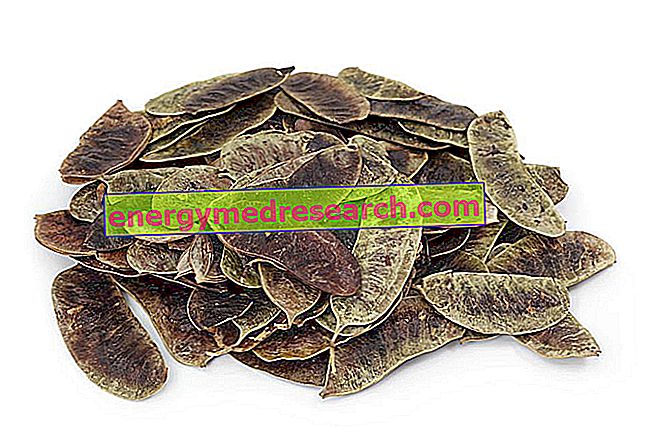
"Senna" means a small group of plant species belonging to the Fabaceae family and the genus Cassia or the genus S enna . The botanical classification according to Linnaeus (L.) and according to Philip Miller (Mill.) Is not superimposable, but both consider the two Genres closely related to each other. In practice, the "senna" can be defined as Genus Cassia and Specie angustifolia or Genus S enna and Species alexandria .
Thanks to its laxative power, the senna has recently attracted a discreet nutritional interest. The pods (also of the related species such as C. acutifolia and C. fistula ) are mainly consumed and the dried leaves only marginally; due to its mechanism of action, mainly due to the presence of molecules called sennosides, the senna is one of the so-called anthraquinones .
In addition to those specific to the intestinal tract, no other side effects due to senna intake are known; this is why in 2006 an experimental study called " An oral carcinogenicity and toxicity study of senna (Tinnevelly senna fruits) in the rat " was published. Below we will try to briefly summarize it.
In the laboratory, a sample of rats was given a senna-based laxative using a gastric tube; the frequency was once a day, the doses of 0, 25, 100 and 300 mg / kg / day and the maximum period of 104 consecutive weeks.
The maximum tolerated dose was calculated based on clinical signs related to the laxative effect of senna, approximately 300 mg / kg / day.
Sixty animals per sex were used between the control and dosage groups.
The evaluations included: clinical chemistry, hematology, toxicokinetics and histology (both in control groups, both in high, medium and low dosage groups) of the intestinal tract, adrenal glands, liver, kidneys, brain and macroscopic lesions.
The first clinical correlation on treatment was that of mucoid feces, observed in the group with 300 mg / kg / day. Compared to the control group, animals with this dosage also showed a reduction in body weight, an increase in water consumption, significant changes in serum electrolytes (increase in potassium and chloride) and in urine (decrease in sodium, potassium and chloride). These variations probably represent physiological adaptations induced by the laxative effect of the senna.
At the necropsy (external and internal inspection of the corpses), in all the treated animals a dark coloring of the kidneys was observed. From a histological point of view, a moderate basophilia of the tubules and tubular pigment deposits was also observed.
Moreover, for all the treated groups, in the colon and in the cecum there was a slight or slight hyperplasia.
In a previous 13-week study, these histological changes, as well as changes in the chemical and clinical parameters of urine, have been shown to be reversible.
No correlation was observed between treatment with senna and any neoplastic alterations of any examined organ.
On the basis of these data, it can be concluded that, in rats, the senna does not represent a potentially carcinogenic food / food supplement, even after the daily administration of 2 years with a dosage of 300 mg / kg / day.



